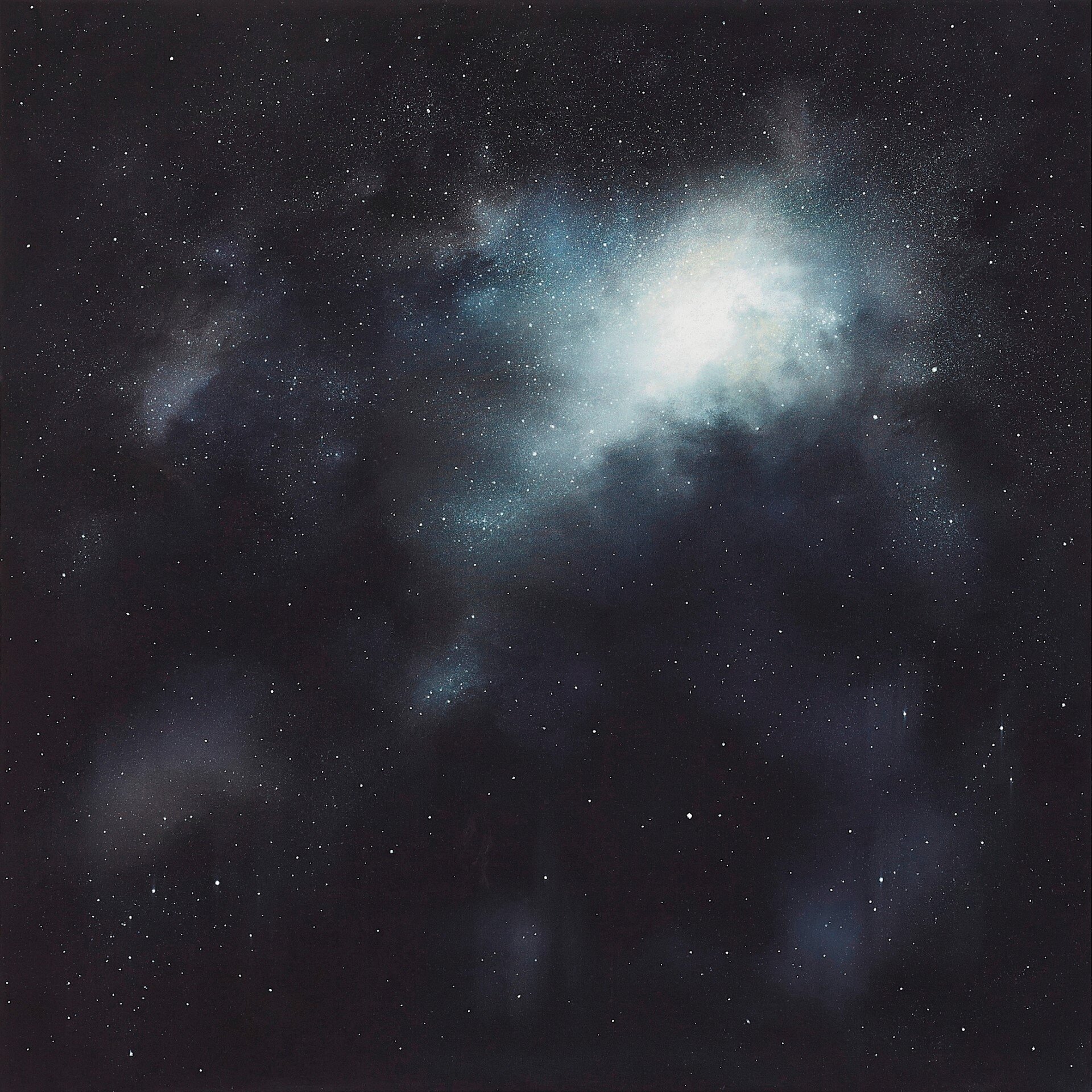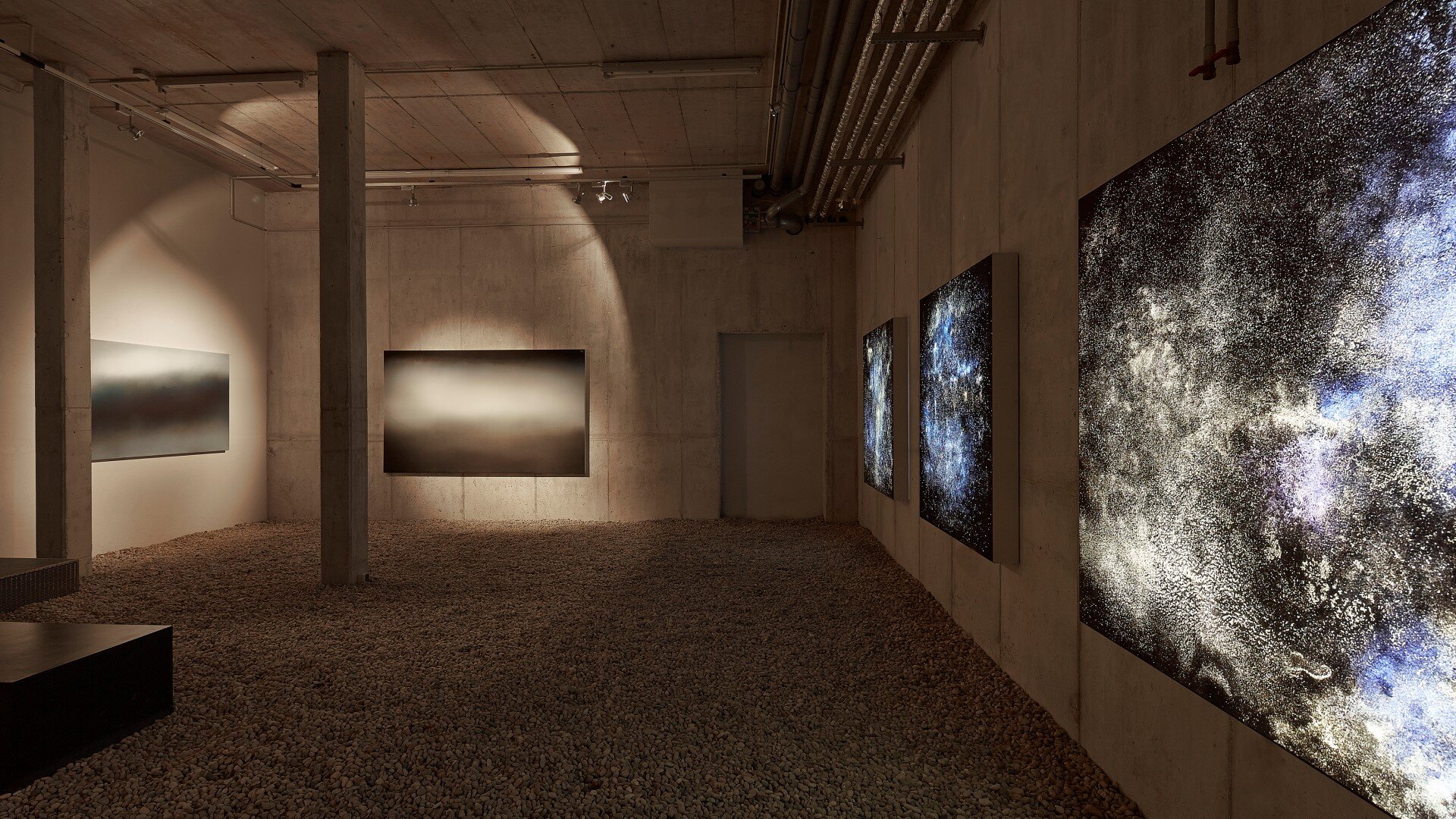
Clouds & Nebula -
Haager Deep Field
by Hansjörg Fröhlich
Hubble Deep Field is what NASA calls the deepest image of the universe ever recorded in the range of visible light. The region of the sky selected for the image contains hardly any distracting bright stars in the foreground. The chosen area is located in the constellation Fornax, southwest of Orion.
In what he calls his 'Haager Deep Field', Philipp Haager scans dark places where so far little to nothing has been presumed to exist. He doesn’t need a telescope, because what happens on his large-format canvases is not a retinal image but a correlate of what takes place behind the retina, a time exposure of the inner eye. Haager detects particles of light and logs light traces.
The fields created through this scattered light recall the nebulas of far-off galaxies. Blurring dominates here, as the threshold of the concrete dissolves in a repetitive process of continuous fractalization. Haager thus does chaos research, by zeroing in on the complexity and self-similarity of spatial structures and in this way reducing the nature of the universe to the plane of light poetry. Infinity, constant re-formation, creative redundancy – they all culminate in a dynamic state that consists in a sequence of steady transitions: the nebula, a cloud of light.
In this great big cloud that gathers together everything that ever was and ever will be, Haager’s Deep Field is a mega-download of our endless image cosmos.
June 2015
